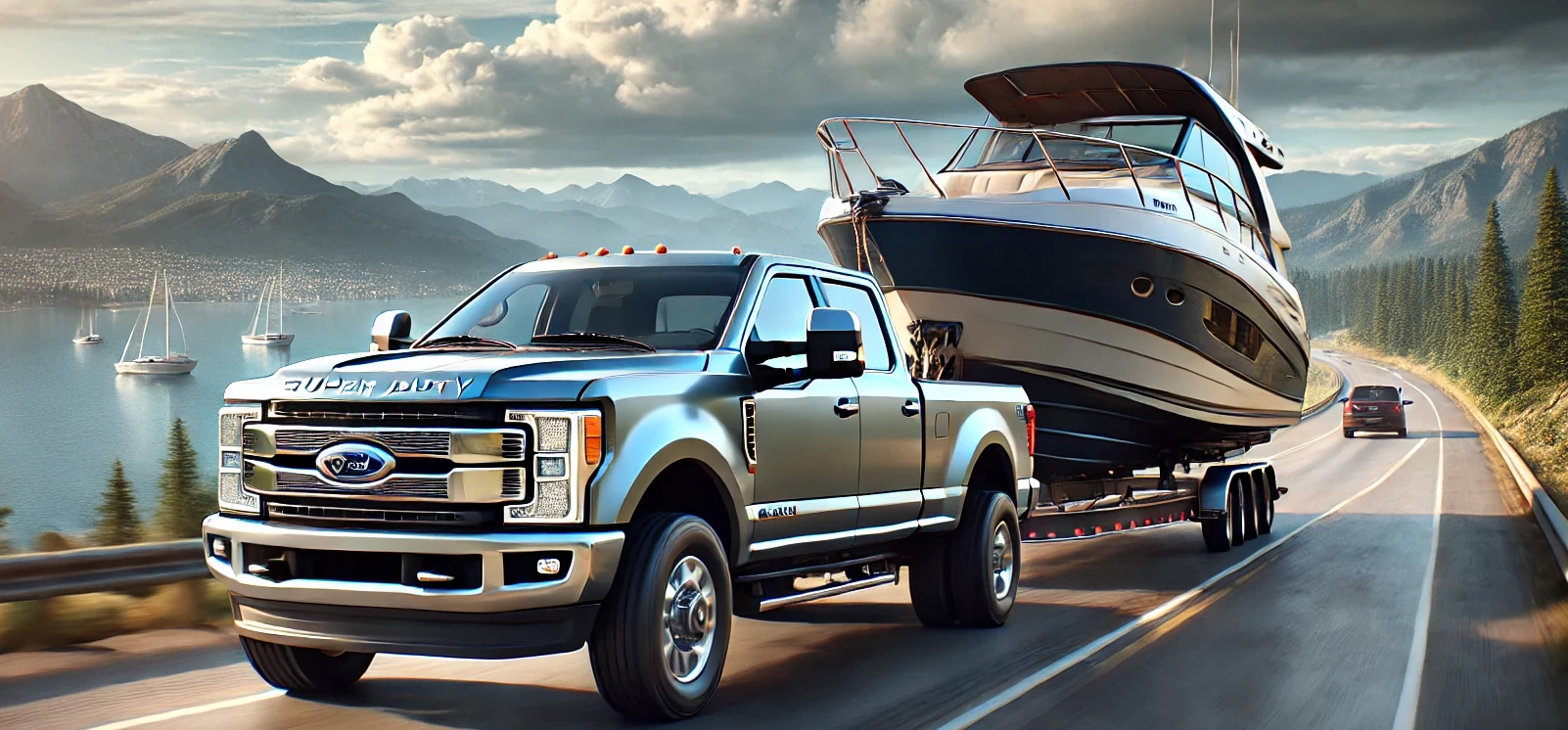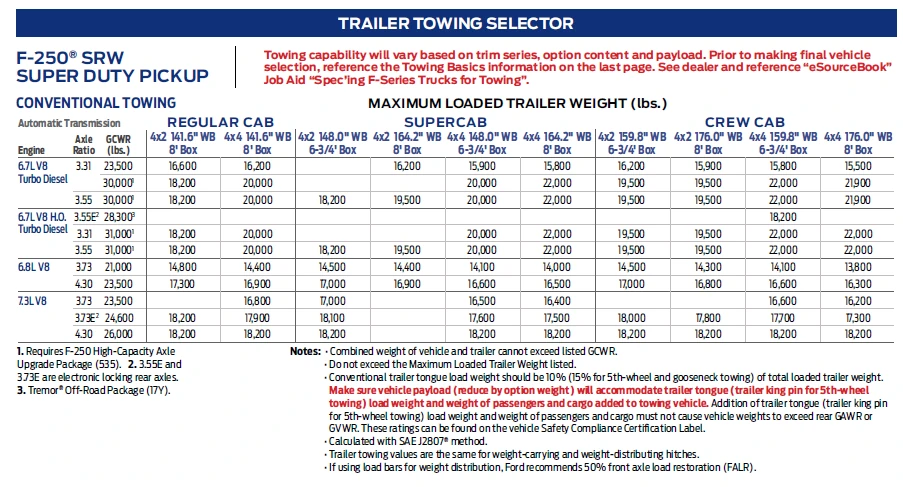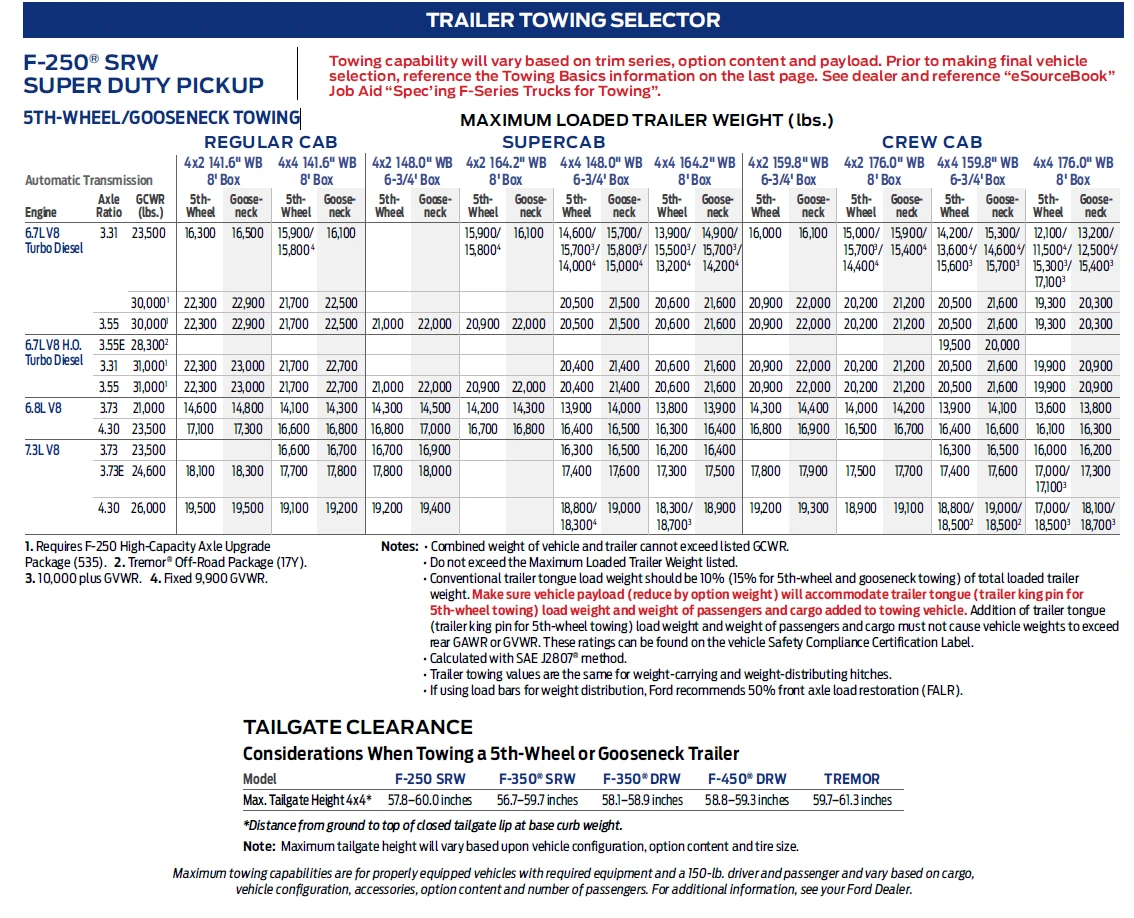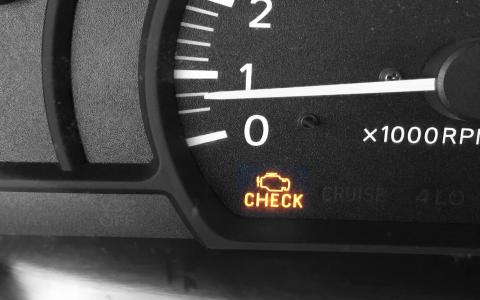
Whether you need to tow heavy loads for work during the week or hitch up a trailer for a weekend getaway, it’s essential to know what your F-250 can handle. The Super Duty lineup is built for tough jobs, and there’s a reason the F-Series has been America’s best-selling truck for nearly 40 years. With two powerful engine options, the F-250 delivers impressive horsepower, torque, and towing capacity—ensuring there’s not much it can’t handle.
Understanding your truck’s towing limits isn’t just about performance—it’s a legal requirement. If you’re directed to a weigh station and found exceeding your F-250’s towing capacity, you could face hefty fines. Towing capacity is a serious matter, and getting it right is crucial for both safety and compliance.


Common Towing Questions
Can my truck handle serious, regular towing?
If you plan on towing heavy loads frequently, investing in a transmission cooler is a smart move. This upgrade helps prevent excessive strain on your truck’s transmission, extending its lifespan and ensuring reliable performance under demanding conditions.
How can I be more aware of what I’m towing?
Equipping your truck with extended towing mirrors is crucial for visibility. These mirrors allow you to see well beyond your truck’s body and past the trailer, helping you monitor your payload while staying aware of surrounding traffic.
Is this everything I need to know?
There’s not enough space here to cover everything about towing, but several key factors should always be considered. Knowing the weight of your trailer, your vehicle’s capabilities, and the type of hitch you’re using is essential. Trailer hitches are categorized into different classes, ranging from lightweight Class 1 to heavy-duty Class 5. Additionally, specialized options like gooseneck and fifth-wheel connections each have their own weight limits that must be followed.








![What Ford F150 is Best for Towing ? [Full Guide]](/sites/default/files/styles/frontpage_stories/public/2025-04/f250-camping.webp?itok=6Ah370zB)
